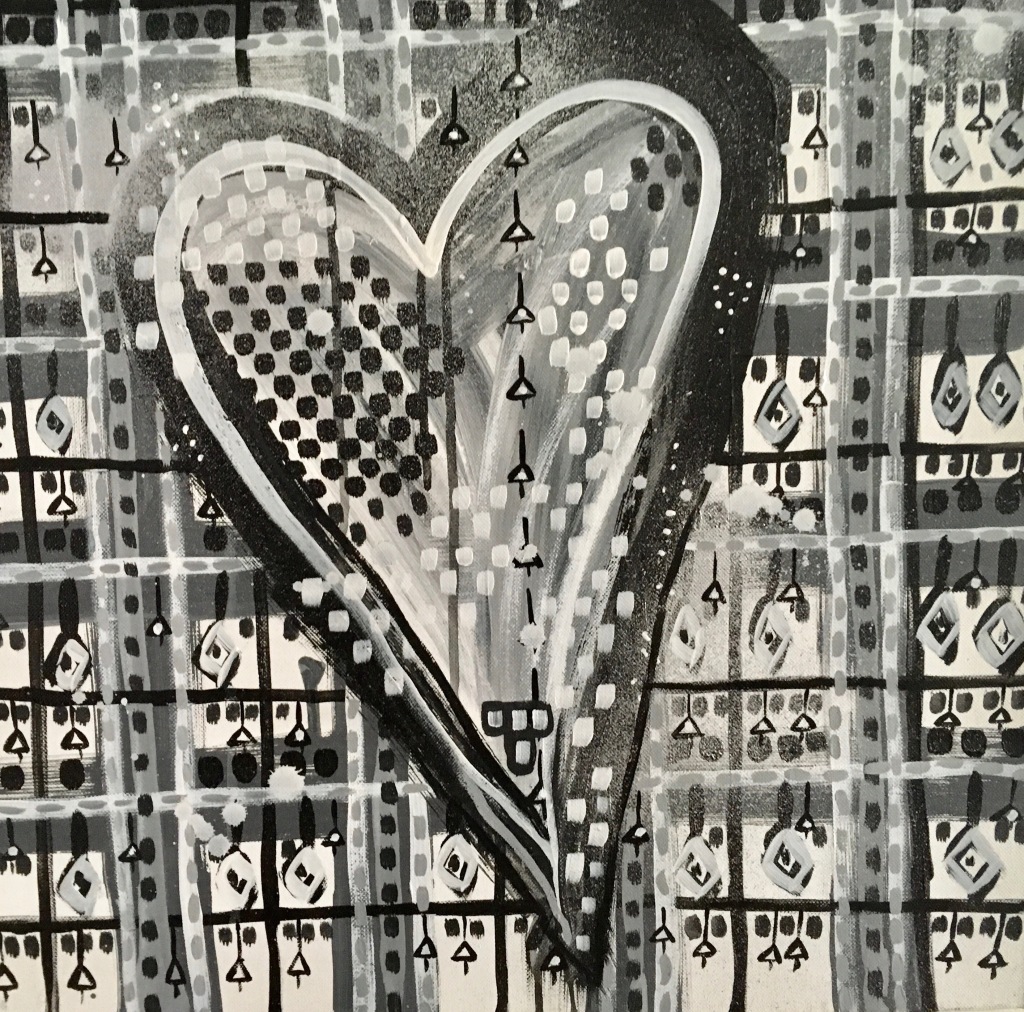
“Light in the Darkness” Acrylic on Canvas, DS
. . .
In my youth I avidly read books required by courses. I joined into class discussions, my hand always in the air. Debates fascinated. Once upon a time, in a flurry of defences, I argued against free will. When I listened, I became convinced of the other side, for a lifetime. Mrs. Krueger was the freedom fighter. I wonder now at her background. Were her arguments from experience?
I was more to be found on the dance floor than at the library door. I married young and had my children. It was then, in the hours after bedtime, and during naps, that I read as if my life depended on it. The first tome was Gone With the Wind. I began university and was interrupted by life many times. This became my pattern.
The Gleanings Project, began in the New Year, will be part of one of those interruptions. I will glean books for glimpses of knowledge and wisdom, fun and study, using fewer than 500 words. Later, I will get down to serious work again. Thank you for being companions on the way.
Your likes and comments are awesome.
O’Donohue, John. Anam Cara: A Book of Celtic Wisdom. New York: NY, HarperCollins Publishers Inc., 1997.
501 words
Behind your image, below your words, above your thoughts, the silence of another world waits . . . Everyone is an artist. Each person brings sound out of silence and coaxes the invisible to become visible. (O’Donohue, xv)
Friendship is the sweet grace that liberates us to approach, recognize and inhabit this adventure . . . The Celtic imagination articulates the inner friendship . . . (xvii)
This book attempts a phenomenology of friendship in a lyrical-speculative form. (xx)
The darkest time of night is immediately before dawn. (1)
Darkness is the ancient womb. Nighttime is womb-time. Our souls come out to play . . . We rest in the night. The dawn is a refreshing time, a time of possibility and promise. (2)
I arise today
Through the strength of heaven, light of sun,
Radiance of moon,
Splendor of fire,
Speed of lightning
Swiftness of wind,
Depth of sea,
Firmness of rock. (3)
The mystery of love . . . (4)
In the Christian tradition one of the most beautiful sacraments is baptism. (6)
Our feelings towards our friends reflect our feelings towards ourselves. (9)
We do not need to go out to find love; rather, we need to be still and let love discover us. Some of the most beautiful writing on love is in the Bible. (11)
In the early Celtic church, a person who acted as a teacher, companion, or spiritual guide was called an anam cara. (13)
Where you are understood you are at home. Understanding nourishes belonging. (14)
Friendship is the nature of God. (15)
A friend is a loved one who awakens your life in order to free the wild possibilities within you . . . Love does not remain within the heart; it flows out to build secret tabernacles in a landscape. (19)
The Buddhist tradition has a lovely concept of friendship, the notion of the Kalyana-mitra, the “noble friend” [who] will not accept pretension but will gently and very firmly confront you with your own blindness. (25)
The face is the icon of creation. (37)
The human person is a threshold where many infinities meet. (41)
The Holy Spirit holds the intimacy and distance of the trinity alert and personified. (48)
Each part of the body hods the memory of its own experience. (49)
The imagination is the faculty that bridges, co-represents, and co-articulates the visible and the invisible. (51)
If you work with a different rhythm, you will come easily and naturally home to yourself. (57)
When you really look deeply at something, it becomes part of you . . . People are constantly looking at empty and false images; these impoverished images are filling up the inner world of the heart . . . To look at something that can gaze back at you, or that has a reserve and depth, can heal your eyes and deepen your sense of vision . . . The Irish painter Tony O’Malley is a wonderful artist of the invisible . . . (61)
